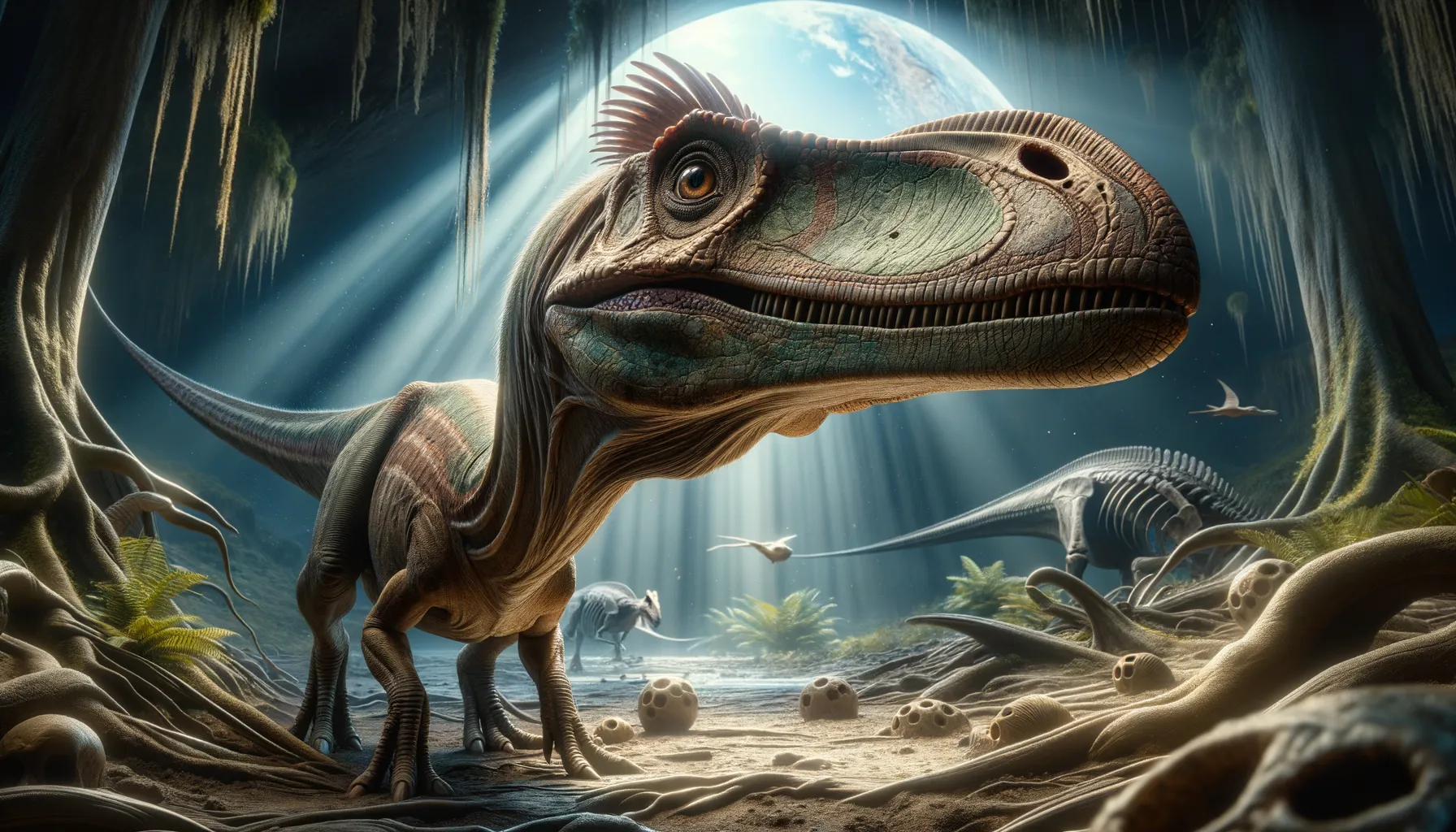
Trachodon
Duck-billed dinosaur with debated details.
Period
Cretaceous
Length
Roughly 12 meters (40 feet) long.
Height
Approximately 3 meters (10 feet) tall.
Weight
Around 3,000 kg (6,600 lbs).
Trachodon was a duck-billed dinosaur, known as a hadrosaur, that roamed the earth during the latter part of the Cretaceous period. Initially named from limited fossil evidence, its classification and understanding have evolved over time. With a distinct beak and presumed herbivorous diet, Trachodon lived in what is now North America. It is often reconstructed with a crest, though this detail is debated among paleontologists.
Diet
Trachodon was an herbivore, feeding primarily on the lush vegetation available during the Cretaceous period. It likely used its wide, flat beak to strip leaves from plants and its strong jaws to grind tough plant materials.
Hunting
As a herbivore, Trachodon did not hunt for prey. Instead, it would have foraged for food, possibly traveling in herds to graze on the available foliage.
Environmental challenges
Trachodon faced various environmental challenges such as fluctuating climates and changing ecosystems during the Cretaceous period. It needed to adapt to varying levels of food availability, especially during seasonal changes. Additionally, the presence of predators would have been a constant threat, requiring vigilance while feeding.
Speed
Moderate, due to a heavy build.
Lifespan
Unknown, not enough data.
First discovery
Discovered in 1856 by Joseph Leidy.
Fun Facts
- Trachodon is known as one of the first duck-billed dinosaurs discovered, even though later studies suggested it might have been a mix of different species.
- The name 'Trachodon' means 'rough tooth,' referring to the dinosaur's unique dental structure that was not smooth.
- For many years, Trachodon was pictured in books and art as a quintessential duck-billed dinosaur, although its existence is now considered doubtful.
- Fossils once thought to belong to Trachodon were discovered in the late 19th century, during a time when dinosaur classification was still developing.
- Trachodon played a significant role in popularizing the idea of duck-billed dinosaurs, even though scientists now question its classification.
- The Trachodon has become more of a historical figure in paleontology, used as an example of how science evolves over time.
Growth and Development
Trachodon's growth and development remain subjects of study but it likely grew rapidly during its juvenile stages, as evidenced by similar hadrosaurs. This rapid growth would have been essential for reaching a size that could deter predators. Developmental patterns might have varied as environmental factors played a significant role in impacting growth rates.
Habitat
During its time, Trachodon most likely inhabited floodplains, marshes, and areas near rivers, where vegetation was abundant. These environments would have provided ample food resources and water supply. Seasonal changes might have prompted occasional migrations to more favorable habitats.
Interaction with other species
Trachodon likely interacted with other herbivorous dinosaurs as part of large mixed herds. Such herds offered protection against predators and allowed them to share information about food sources. Predators, such as large theropods, were a common threat, necessitating group vigilance.
Natural lifespan
Trachodon's natural lifespan remains speculative due to insufficient fossil evidence.
Reproduction
Trachodon, like other hadrosaurs, likely reproduced by laying eggs in nests constructed on the ground. Parental care might have been provided to the young, as suggested by evidence from related species, ensuring survival through protection and guidance to food sources.
Social behaviour
As a herd animal, Trachodon might have exhibited complex social behaviors, such as vocal communication and coordinated movement to avoid predators. Relationships within herds could have involved hierarchy or familial structures, aiding in survival.
Fossil locations
Fossils attributed to Trachodon have been found in North America, particularly in regions known for Cretaceous deposits. However, many remains once attributed to Trachodon have since been reclassified, reflecting the evolving nature of paleontological research.
